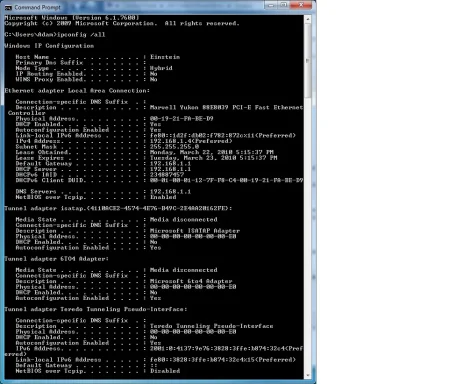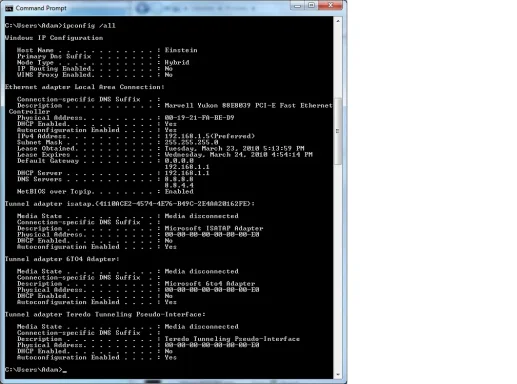- Thread Author
- #1
Hi,
My hardwired Ethernet card will not connect to the internet when using my wireless router.
Currently, to resolve this: 1) the Ethernet Card must be disabled; 2) the Wireless card must then be enabled; then, 3) once the Wireless card has found the internet, it (the Wireless card) must be disabled, and finally, 4) the Ethernet card must be re-enabled (at which point it can then be used to access the net).
Please note:
1) I have tried this with two different Ethernet cards (different brands) so it almost certainly cannot be either their hardware or software.
2) A second computer (laptop) can connect directly to internet through a hardwired connection to the router. Therefore, it is not the router. (The laptop is also Win 7, but DID NOT install the latest updates.)
3) This is a dual boot system: Win 7 and XP. Under XP, the hardwired connection works flawlessly.
4) The Ethernet/Hardwired connection worked under Win 7 for about a week, then the above problem arose on the Wednesday morning after Patch Tuesday (Automatic Updates ON) 03-17-10.
System Specs:
OS: Win 7 Home Premium.
Ethernet: Marvell Yukon 88E8039.
Wireless Card: Broadcom 802.11g Network Adapter.
Router: Netgear Wireless-N 150.
All have latest drivers.
Many thanks to anyone who may have insight into this rather esoteric problem.
My hardwired Ethernet card will not connect to the internet when using my wireless router.
Currently, to resolve this: 1) the Ethernet Card must be disabled; 2) the Wireless card must then be enabled; then, 3) once the Wireless card has found the internet, it (the Wireless card) must be disabled, and finally, 4) the Ethernet card must be re-enabled (at which point it can then be used to access the net).
Please note:
1) I have tried this with two different Ethernet cards (different brands) so it almost certainly cannot be either their hardware or software.
2) A second computer (laptop) can connect directly to internet through a hardwired connection to the router. Therefore, it is not the router. (The laptop is also Win 7, but DID NOT install the latest updates.)
3) This is a dual boot system: Win 7 and XP. Under XP, the hardwired connection works flawlessly.
4) The Ethernet/Hardwired connection worked under Win 7 for about a week, then the above problem arose on the Wednesday morning after Patch Tuesday (Automatic Updates ON) 03-17-10.
System Specs:
OS: Win 7 Home Premium.
Ethernet: Marvell Yukon 88E8039.
Wireless Card: Broadcom 802.11g Network Adapter.
Router: Netgear Wireless-N 150.
All have latest drivers.
Many thanks to anyone who may have insight into this rather esoteric problem.

